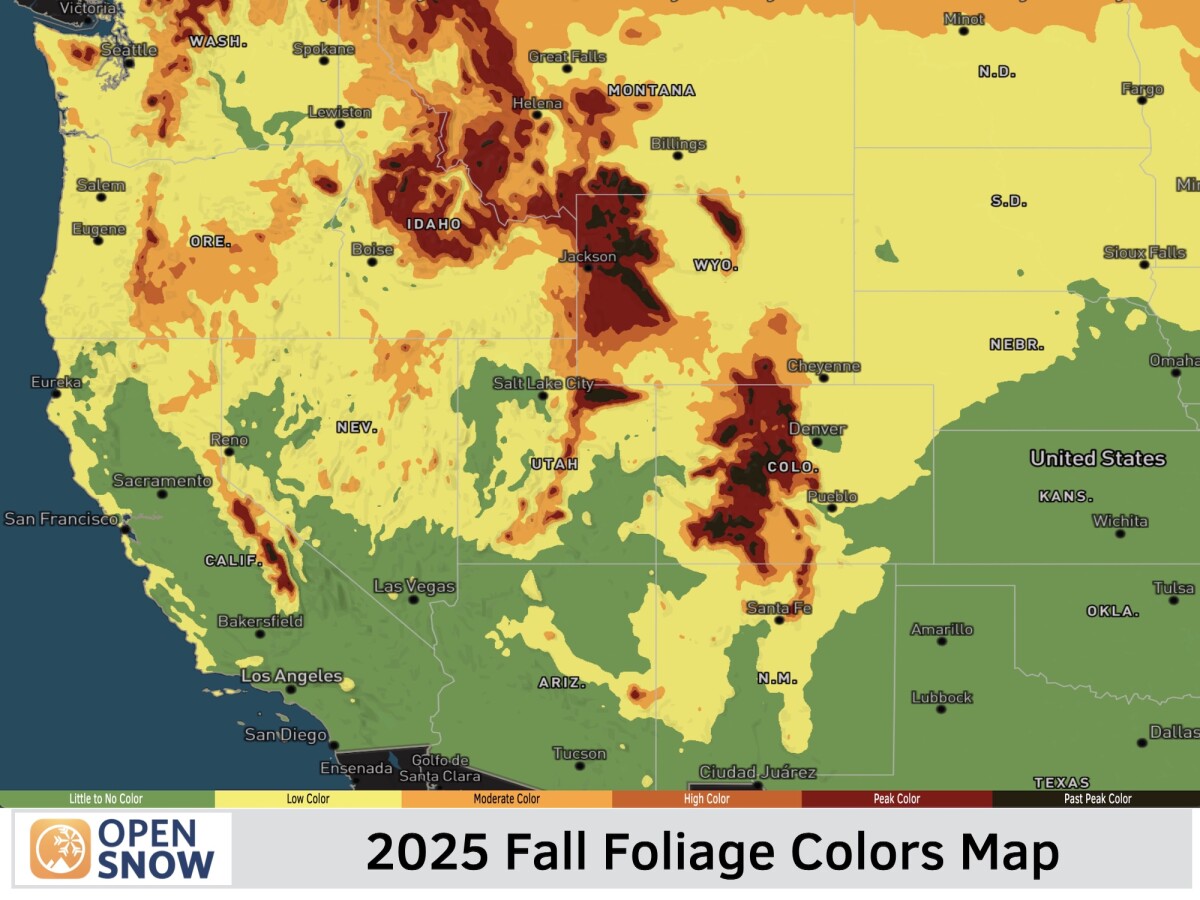News

By Alan Smith, Meteorologist Posted 1 year ago September 7, 2023
2023-2024 Revelstoke Winter Forecast Preview

The 2022-2023 winter was below average in terms of snowfall for Revelstoke, which ended a streak of three consecutive above-average winters from '19-20 to '21-22.
As we look ahead to the 2023-2024 winter season, it's important to remember that any winter outlook will contain an inherent degree of uncertainty. However, there are a few clues that we can keep an eye on.
Following three straight winters of La Niña, we are now heading into an El Niño this season.
In fact, current sea surface temperatures as of late August are showing a strengthening El Niño event.
El Niño, Explained
The term El Niño refers to the large-scale ocean-atmosphere climate phenomenon linked to periodic warming in sea-surface temperatures across the central and east-central equatorial Pacific.
El Niño represents the warm phase of the ENSO cycle and means that the ocean water temperatures are warmer than average.
Winter temperatures tend to be warmer than average across Western and Central Canada during El Niño cycles, but precipitation and snowfall signals vary by region.
Confidence is increasing that we could see a strong El Niño this season, which would officially occur if sea surface temperatures in the Niño-3.4 region of the equatorial Pacific Ocean are at least 1.5ºC warmer than average for three consecutive, overlapping 3-month periods.
We have identified six significant El Niño episodes that have occurred since snowpack records began at the Mt. Revelstoke National Park Snow Survey Site in 1992 (located just north of the ski resort at an elevation of 1,850 meters or 6,070 feet).
Let's take a look at these significant El Niño seasons to see if we can identify any snow trends at Revelstoke.
Historical El Niño Seasons @ Revelstoke
After looking back at the six most recent significant El Niño years and comparing them against the 30-year median snow water equivalent (SWE) on March 31 of 1185 millimeters (mm) at the Mt. Revelstoke National Park snow survey site near Revelstoke, I've found that the median SWE near Revelstoke during those El Niño years is 1071 mm on March 31 or 90% compared to the 30-year normal.
SWE on March 31 During El Niño
- 1993-2022: 1185 mm (30-year normal)
- 1994-1995: 1085 mm
- 1997-1998: 1064 mm
- 2002-2003: 1077 mm
- 2009-2010: 960 mm
- 2015-2016: 1283 mm
- 2018-2019: 997 mm
One out of the six El Niño years produced above-normal snow water equivalent (SWE) near Revelstoke on March 31.
For timing, there's an interesting signal when looking at the change in SWE each month during the six most recent significant El Niño episodes and comparing them against the 30-year median change in SWE for that month.
- October: 119 mm (95%)
- November: 257 mm (115%)
- December: 229 mm (105%)
- January: 196 mm (88%)
- February: 100 mm (63%)
- March: 161 mm (82%)
- April: 30 mm (48%)
It tends to be that the early season (Nov-Dec) is more likely to be above normal, while mid to late season (Jan-Apr) is more likely to be below normal.
Overall, history tells us that Revelstoke tends to be slightly below normal for snowfall during significant El Niño events, but with the potential for a stronger start to the season that could help to set a solid early season base.
Having said all of this, for skiers and snowboarders, keep in mind that when it comes to finding the best conditions, it’s all about timing. To have the best chance of enjoying the deepest powder, our recommendation is to book a trip 7-10 days in advance.
Sometimes, longer-range forecasts can identify possible storms 1-2 weeks (or longer) in advance, but often, forecast confidence in the details of each storm only begins to increase when the system is about one week away or closer.

If you're ready to level up your weather app for the upcoming winter season, consider upgrading to OpenSnow All-Access. Whether you’re chasing powder, searching for sunny days, or something in between, our 10-day snow forecasts, expert "Daily Snow" forecasters, and high-resolution weather maps have you covered.
But don't just take my word for it ... "Any weather app can give a mediocre forecast for a mountain town, but only OpenSnow provides a good idea of actual mountain conditions. It's a small price to pay ($29.99/year) for the best weather forecasts." – Real App Review
Alan Smith, Meteorologist
[email protected]
About The Author





